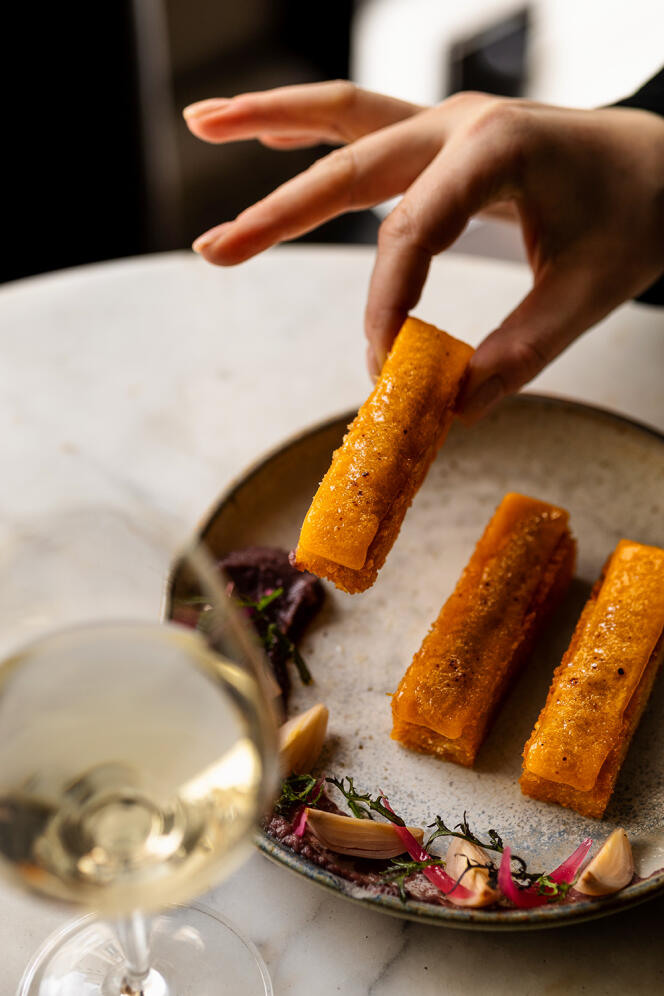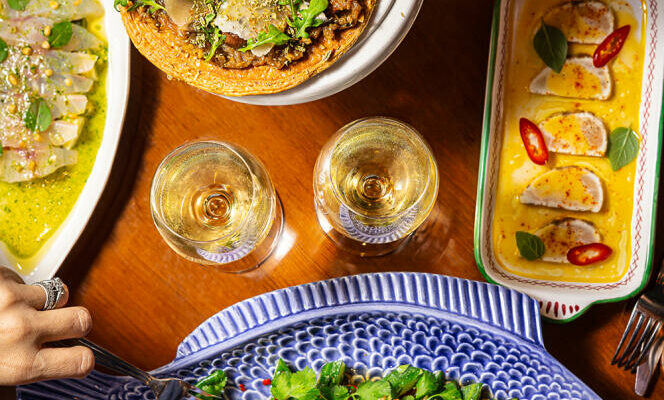A Friday evening in the fall, in the 20e district of Paris. From 7:30 p.m., the small room is full. Tables of friends happy to be there; further on, regulars to whom there is no need to explain the concept. Here, as in many restaurants in France or the capital, there is no traditional menu in the evening, but around ten dishes to share. Everyone in front of him has his own small empty plate and helps himself from those, prettily laid out, which are placed one after the other in the center of the table. Sea bass ceviche and tiger leche, leek spaghetti, oyster mushrooms with parsley, stuffed cabbage…
Since its opening ten years ago, Le Jourdain has maintained its course and a clientele of aficionados. In the wake of Le Dauphin, by chef Iñaki Aizpitarte, it was one of the first restaurants in Paris to offer this method of dining in the evening. “I always had the frustration of having to choose at a restaurant. I was coming back from several years in Barcelona, where the tapas culture is very strong, and I loved this principle of having a meal while tasting lots of things,” explains its founder, Jean-Baptiste Jay-Gallo.

Aux deux amis, opened by David Vincent-Loyola in 2010, provided the impetus, followed by Clamato. These new bistros had the particularity of being created by chefs, indicates Christine Doublet, co-director of the Fooding guide. They offered hand-picked natural wines, served with elaborate and inventive plates instead of the classic cold meats, cheeses and vegetables found in wine bars.
“When Bertrand Grébaut and Théophile Pourriat, after their restaurant Septime, opened Clamato, they entrusted the kitchen to a real chef, Erica Archambault. They wanted a more relaxed place, open every night of the week, where you could eat really well and not just have drinks,” she specifies. In the same spirit, the Australian chef James Henry had created his dining bar in his restaurant Bones, adjoining the dining room reserved for his tasting menu, where several people could come without reservation to drink wine and share lots of original and tasty dishes.
“Tapassiettes”
This culture of sharing was already very strong in Anglo-Saxon restaurants in the early 2000s, underlines Elodie Piège, wife of chef Jean-François Piège and general director of the Maison Piège group. “It developed with fusion cuisine and places like Zuma, in London; with chefs who had traveled to Asia, Spain, South America or who came from the Middle East, like Yotam Ottolenghi. It took him much longer to settle in France. »
You have 70% of this article left to read. The rest is reserved for subscribers.
